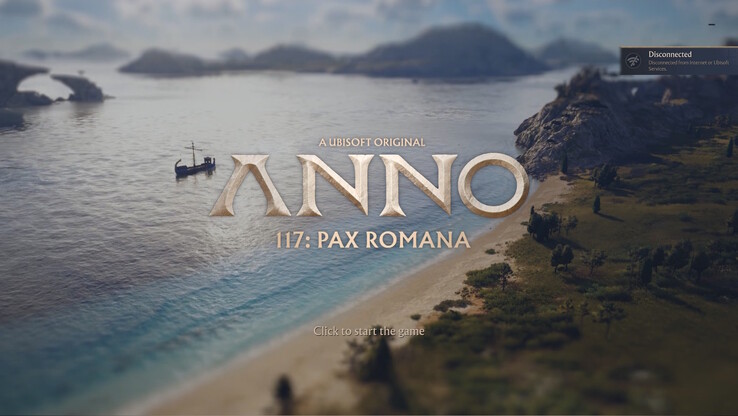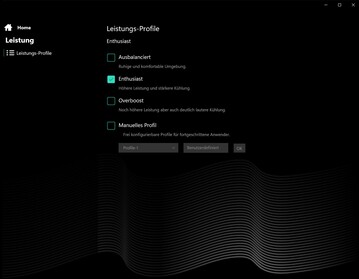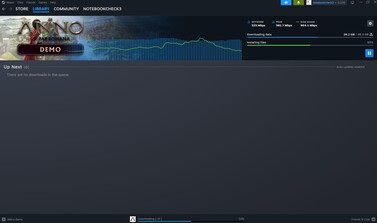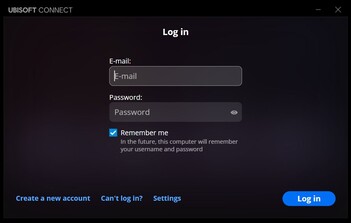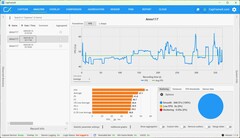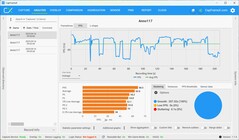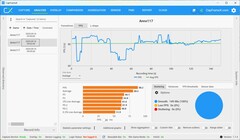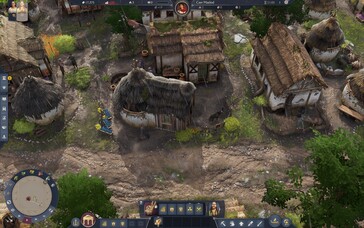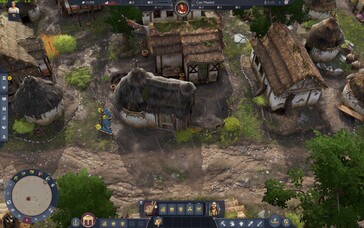Our colleague Silvio Werner was able to try out Anno 117 for a mere 30 minutes at CES 2025, and his preview article (in German) highlights what has changed fundamentally. We, on the other hand, installed the trial version of the new building game Anno 117: Pax Romana, which is currently free until Tuesday via Steam, and were able to play around with it for longer. Unfortunately, you can't save your progress and have to start over again and again. This also means that your progress cannot be transferred to the paid version.
The XMG Pro 16 (E25) with RTX 5070 Ti served as the test system. Instead of the loud overboost mode of the XMG, we opted for the slightly less powerful enthusiast mode for our measurements, even though the GPU then runs at “only” 130 instead of 140 W.
Since 2009, Blue Byte in Mainz has been responsible for the Anno series, which is still published by Ubisoft, a company that is currently struggling financially. Accordingly, after installing the approximately 46 GB, you will also need to register for a Ubisoft Connect account.
Then we can finally start the game. In the main menu, we click through a series of graphics options. In addition to the resolution, we can also select the upscaling technology (DLSS, FSR, XeSS), and in the advanced settings, texture quality, anti-aliasing, etc. can be configured individually. Frame generation is currently not offered, by the way.
Benchmarks
We play Anno in the native laptop resolution of 2,560 x 1,600 pixels at maximum quality. The first thing we notice is that the game's displays extend beyond the edge of the screen, at least on our system, which means we can't see the interface properly. However, restarting the game solved that problem.
Without AI upscaler, we get around 40 fps at the start of the game. Later on, when more buildings are added and a large number of NPCs are scurrying around on the screen, the frame rate can drop a little. This is quite demanding for a building strategy game. When we zoom in on the action and look at the lovingly crafted details, the game runs faster than when we zoom out and observe the hustle and bustle of our city.
| Anno 117 | Native | DLSS Max Quality | DLSS Ultra Performance |
|---|---|---|---|
| 2560 x 1600 | 40 fps | 47 fps | 79 fps |
| 1920 x 1080 (FHD) | 63 fps | 81 fps | 113 fps |
With Nvidia DLSS, the frame rate increases depending on the selected quality setting. At maximum quality, we observed around 47 fps, while selecting Ultra Performance yielded up to 79 fps. We did not notice any image errors due to the use of AI, and any increase in latency is unlikely to be an issue in this genre.
However, there is a noticeable difference in quality between the DLSS options. Here are two comparison images of DLSS at the highest zoom level, one at maximum quality and one at ultra performance. The latter looks significantly less sharp, the textures appear “washed out,” the rain is paler, and there are fewer details.
Here are three more comparison images, this time also in native settings, but in Full HD. It can be seen that the DLSS Ultra Performance option is less appealing, for example in the water on the left of the image. It is therefore worth switching to the higher DLSS levels in terms of image quality, provided your PC can handle it.
Conclusion
Overall, the (not yet fully optimized) demo of Anno 117 seems to be quite demanding. Even our RTX 5070 Ti only achieves around 40 fps in native 2,560 x 1,600 in the starting area. When the cities later take on significantly larger dimensions and the bustle factor increases significantly, this value is likely to drop even further.
Fortunately, current AI upscaling techniques can conjure up significantly more frames from the game, especially in this genre, as latency plays less of a role.





